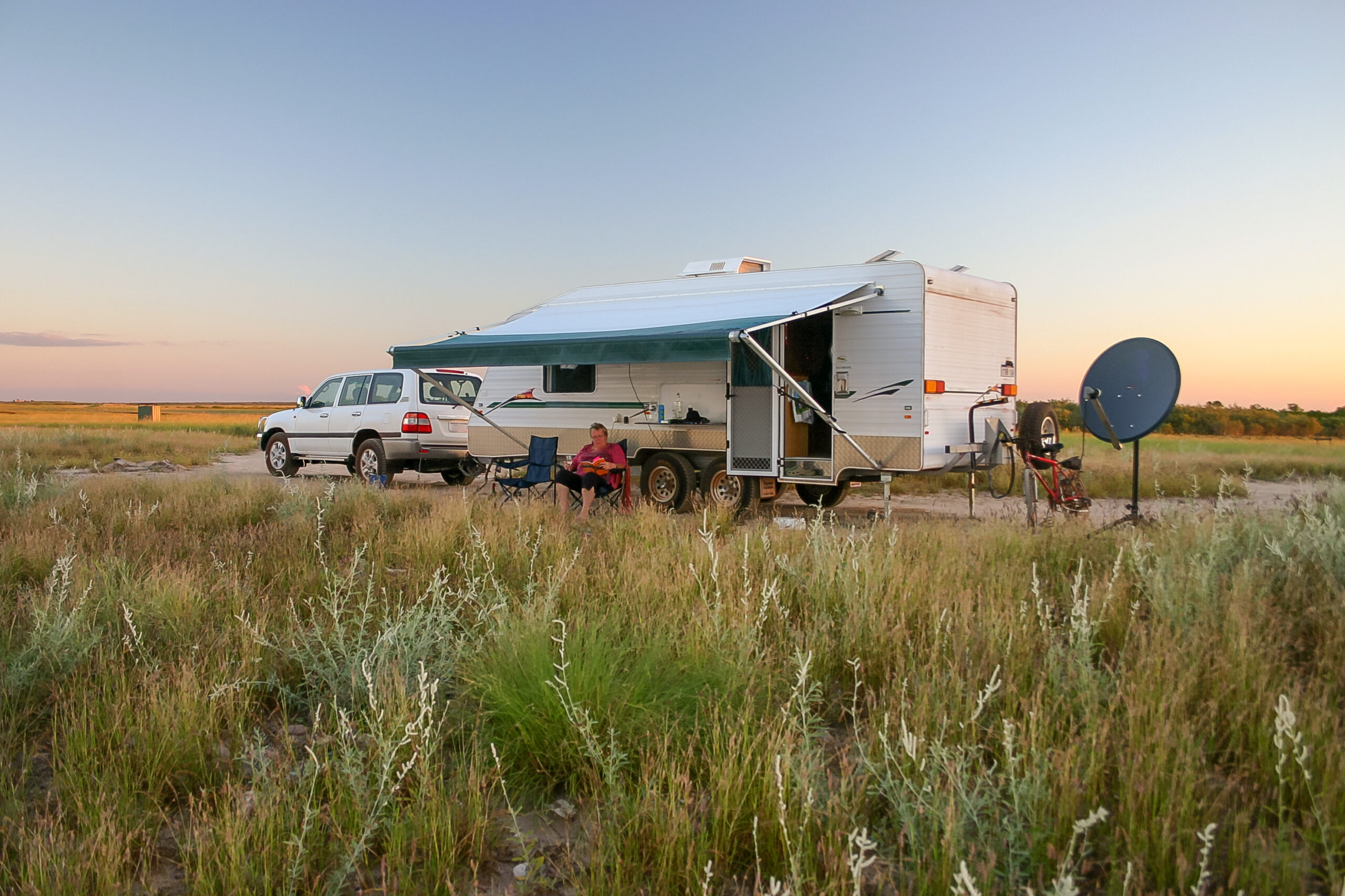
Everything You Need To Know About RV Awning Maintenance
Your RV awning probably isn’t one of your biggest concerns while you’re thinking about preventive maintenance on your RV.
In fact, awnings are usually one of the least talked about parts of an RV. But considering the cost of replacement for a typical RV awning, you should probably be a bit more diligent in showing it the care it deserves.
With normal usage and routine cleaning, an awning can last the lifetime of an RV.
But beware: if abused and neglected, you could be looking at quite a pricey replacement in a matter of just a few years.
In this article, we’ll take a look at the most important things to remember about RV awning maintenance.
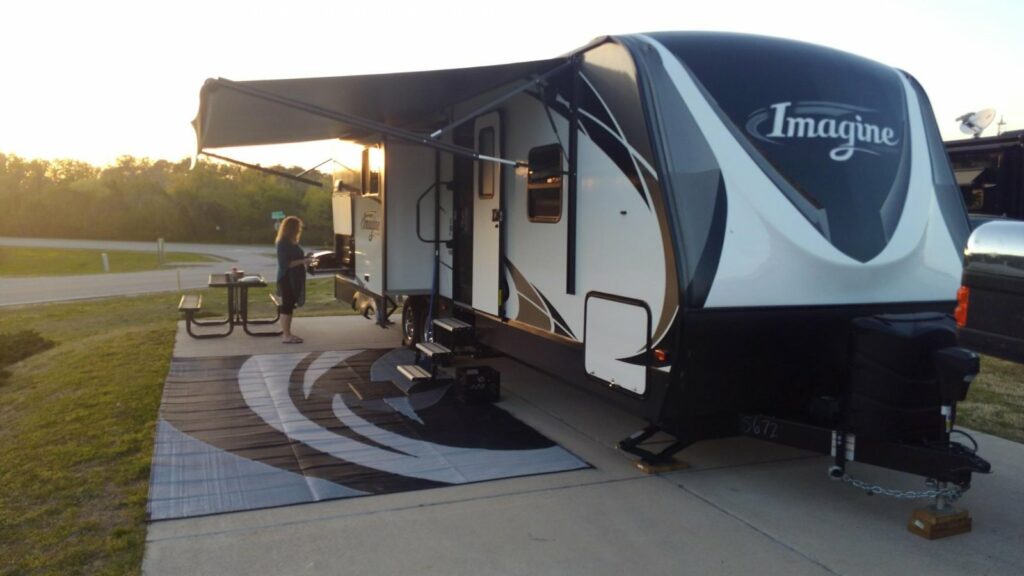
RV awning maintenance tips
1. Don’t roll up a wet awning
One of the biggest mistakes you can make with your awning is to roll it up wet—and then store it that way.
If moisture is allowed to collect and remain on the fabric, mildew and dry rot will likely take hold and ruin the fabric in short order.
Let your awning air dry before you pack up to leave the campground. If it rained hard for some time while your awning was extended, give it extra time to dry. Usually, it’s still quite humid for a day or two after a hard rain.
High humidity will lengthen the time it takes for your awning to dry completely.
2. Know the type of awning on your RV
RVs awnings are usually made of two types of materials:
- Vinyl
- Acrylic
How you wash your awning depends on the type of material from which it’s made. For either type, you can simply hose off the awning with straight water. Usually, this is enough to keep the awning clean.
The less you scrub an awning the better.
Scrubbing will gradually wear down the fabric and the manufacturer-applied water repellant coating.
Vinyl Awning Care
You may scrub vinyl awnings with a soft brush, water, and soap.
Vinyl awnings are usually coated with a substance that discourages mildew growth, and it’s important not to scrub so hard that you end up rubbing the coating off.
Acrylic Awning Care
Use a stiff brush, water, and regular soap.
Acrylic awnings don’t encourage the growth of mildew, but you might still need to use a brush if yours is particularly dirty.
CAUTION: For both types of awnings, vinyl and acrylic, it’s important to never use abrasive or oil-based cleaners. Always let the awning air dry—don’t use heaters. Keep the water temperature less than 100 degrees Fahrenheit. You’re just trying to get the dirt off, not deep clean the awning.
3. Protect your RV awning from the damaging effects of UV radiation
Ultraviolet rays from the sun will also take their toll on your awning.
Have you seen what a tarp looks like after a few months out in the sun?
Once the bead that fastens the awning fabric to the rail of your motor home breaks down, you have no choice but to replace the fabric completely.
If you are purchasing a new awning, seriously consider those that have a final wrap of flexible aluminum which completely encloses the awning material while the awning is in storage. This wrap reduces the damage done to the awning fabric by the UV rays.
4. Clean your RV awning routinely and with appropriate products
There are a variety of commercial cleaning products recommended for cleaning your awning fabric.
Here are a few highly rated ones to choose from:
Another good choice is some mild detergent and a bucket of water. Most general dirt and grime can be easily washed away with soapy water and a soft-bristled, long-handled car wash brush.
Although you can just let the cleaning product do the work, you can use a scrub brush for a deeper clean.
Simple awning washing steps
To wash your awning, extend it fully without raising the side arms. With the awning leaning closer to the ground, wet it down with a hose and begin scrubbing. Don’t get excessive in the amount of pressure in one small area.
This is fabric and can only tolerate so much scrubbing.
If normal soapy water doesn’t remove all the stains, then it may be worth the cost of purchasing a commercial cleaner designed for the task. If you have a mildew condition to deal with, by all means go with a commercial detergent designed to stem the growth of mold.
Leave your awning completely extended to allow for complete drying.
5. Don’t let the wind take your awning for a ride
Another good device to extend the life of your awning is a set of De-Flapper clamps.
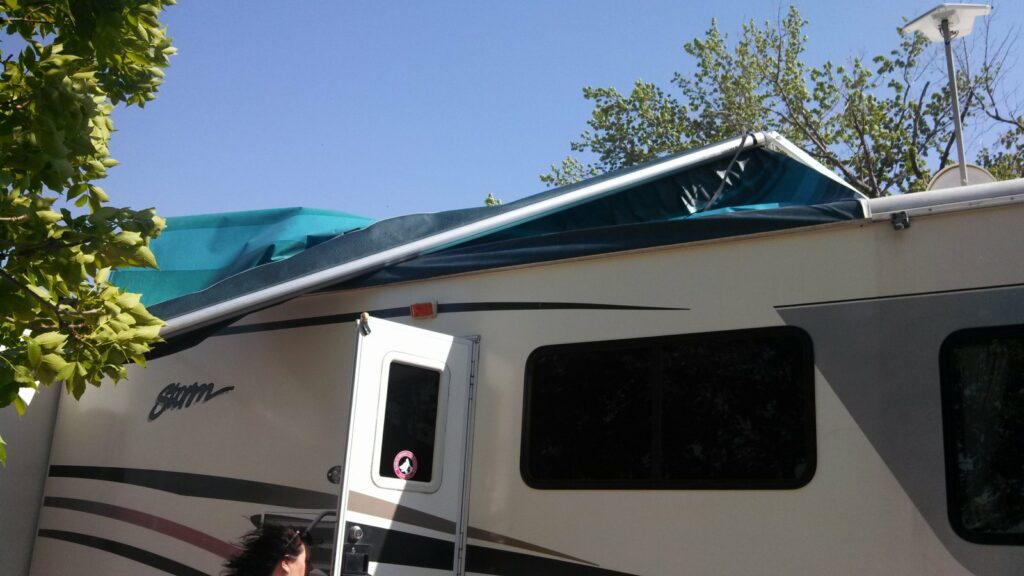
These devices help stabilize the fabric in windy conditions. Continued flapping of the fabric will cause the bead that fastens the fabric to the awning rail to tear.
Once that bead tears loose, the fabric is ruined.
Minimizing the amount of flapping will greatly extend the life of the awning fabric.
6. Make use of an awning stabilizer kit
If you extend your awning and leave it unattended, it’s a good idea to use an awning stabilizer kit.
With screw anchors and spring-loaded tension straps, this kit greatly reinforces the strength of your awning hardware.
Awnings are only rated to tolerate minimal wind conditions, so strengthening the arms by securing them to the ground will likely save your awning from damage when the wind kicks up unexpectedly.
7. Drain your awning of water
Be careful with the placement of your awning if you anticipate rain.
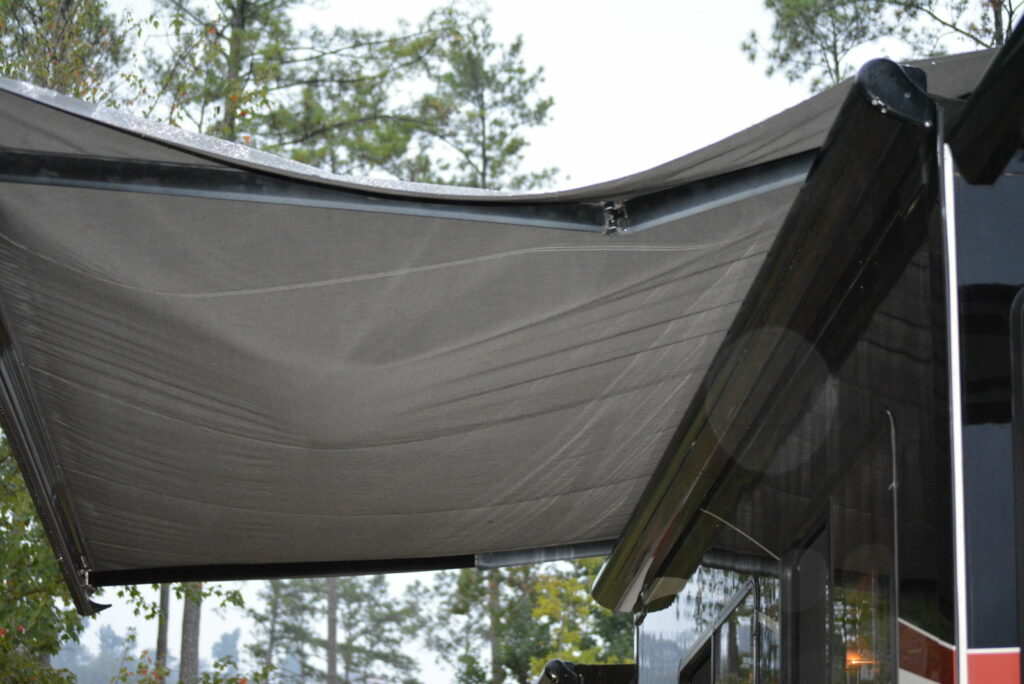
Left unattended in the full upright position, the awning acts like a huge water catchment system with no way to drain itself.
Always set your awning so that one corner is dipped. You want rainwater to be able to run off the awning.
Hundreds of pounds of water can be held in the bowl that forms on a fully extended awning.
At best it will bend the awning tube, making it hard if not impossible to retract.
Worst-case scenario: the whole awning will be torn loose from the RV.
Related: Don’t Let Wind & Rain Destroy Your RV Awning
8. Always lock the rewind mechanism
When you stow your awning for travel, be sure to set the rewind mechanism so that the awning can’t be rolled out.
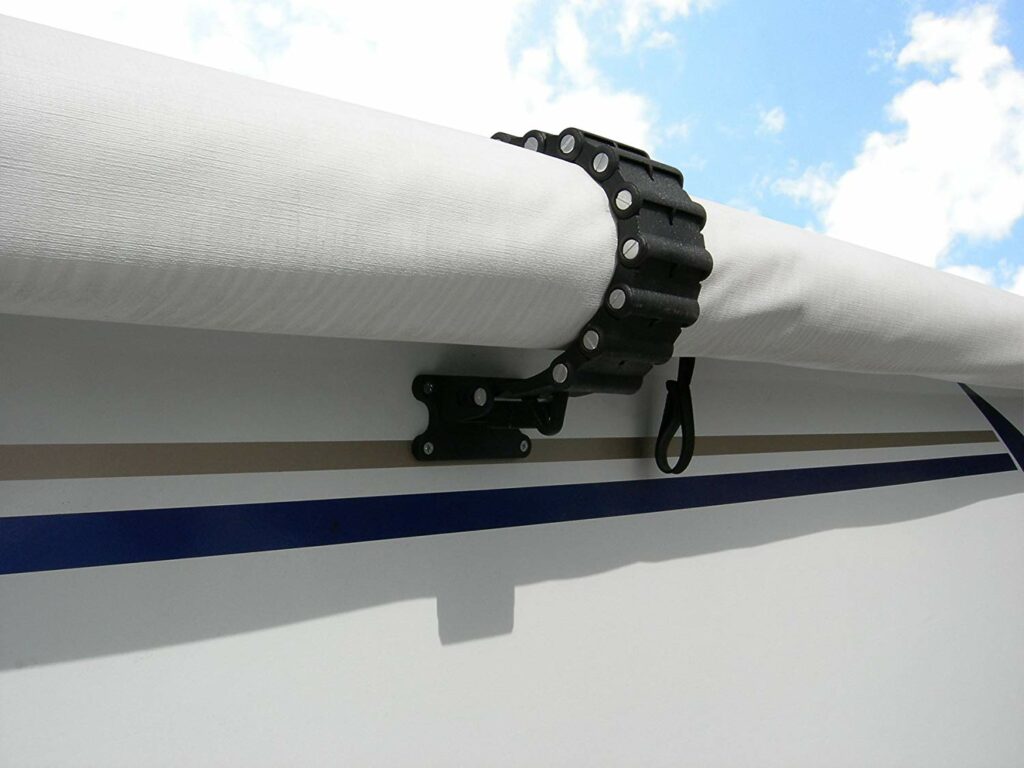
You can use an awning lock to ensure yours is secure.
If this small step is forgotten, and you come across powerful crosswinds during your travel, the awning can extend itself while you drive along.
I can’t tell you how many trashed awnings I’ve seen along Interstate 10 east of Tucson, AZ.
Known for its unexpectedly strong winds, this area has seen many awnings ripped off passing RVs. An awning lock will prevent this from happening to you.
Take care of your awning for best results
It’s a simple matter of proper storage and adequate care to make your awning last the life of your RV.
My coach is 21 years old, but the awning is still in like-new condition.
That’s the kind of life expectancy you can achieve with proper care and use.
Keep track of your RV maintenance
Make sure you keep track of all your RV maintenance with an online tool such as RV LIFE Maintenance. Not only can you keep all of your documents and receipts in one place, but you’ll also receive timely reminders when maintenance is due and potentially avoid a costly repair or serious accident.

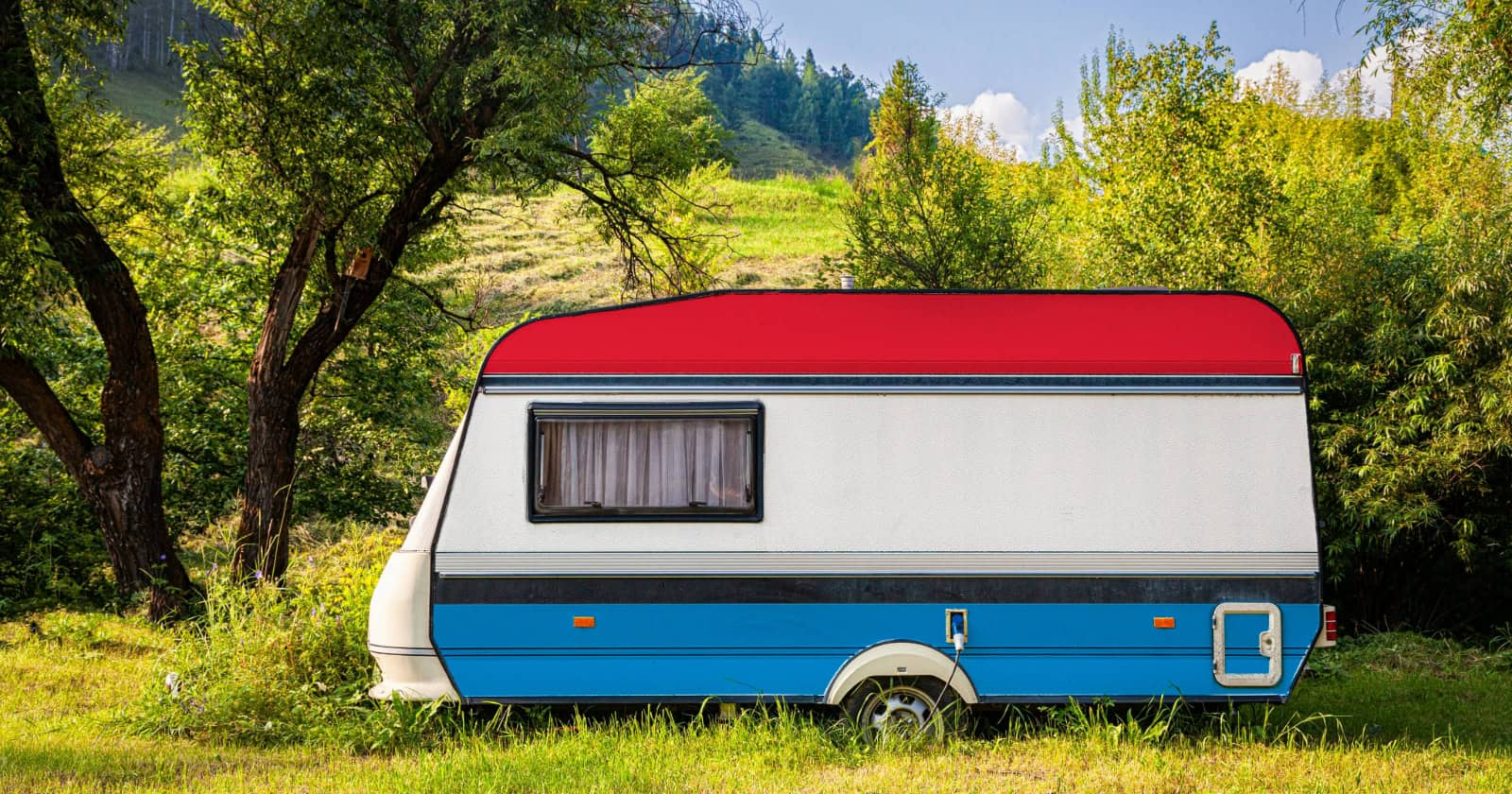

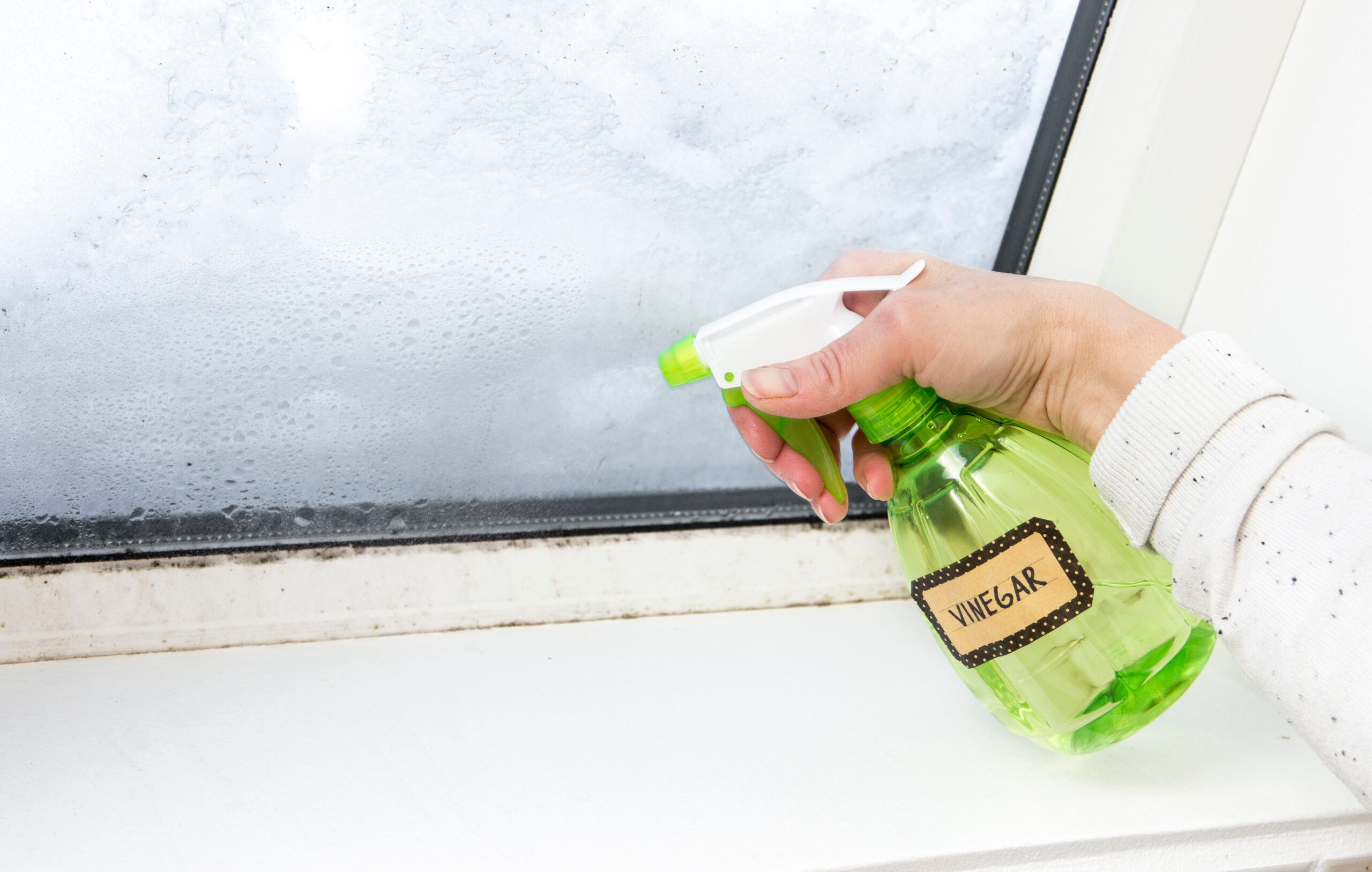
How do you tell what your awning is made of? Vinyl or acrylic?
Excellent article. When you are talking of crosswinds and awning unrolling while driving does this also include electric awnings. There is no mention of this in the article. I have a new 5th wheel {electric awning} and never thought that might be possible.
Fairly basic common sense. I was looking for something a little more insightful, “good to know ” factor. For one, can bleach be used on vinyl? I have read “no”.
Do you need to treat awning with anything to protect from hot AZ. Sun?
Thanks Roy, glad you found the article useful!
Great articles. Enjoyed the helpful tips.
Good point! Yes there are awning locks that will prevent awnings from unrolling due to high cross winds. Camping World carries this model: http://www.campingworld.com/shopping/item/rv-awning-clamp-white/35618
There are a couple other brands on the market as well.
Would have liked to see more talk about locking you awning not just the lock but a locking system. We use a pull down rod to keep it from unrolling in transit. There are commercial locking systems to use. see way too many awnings on the side of a road.